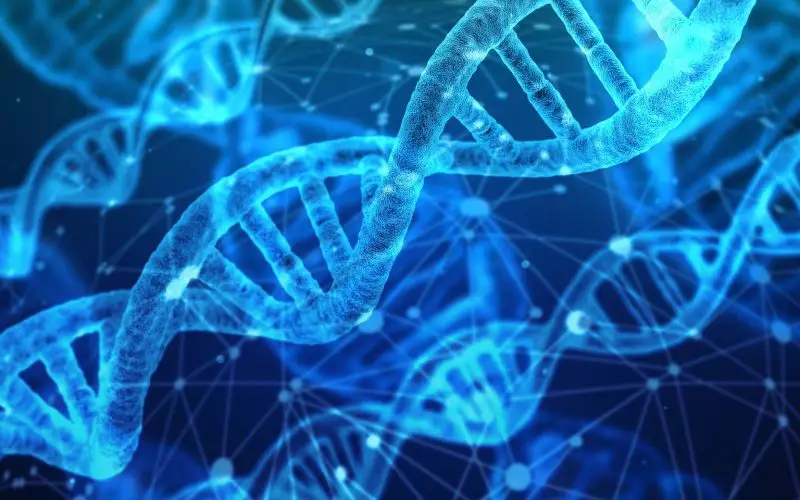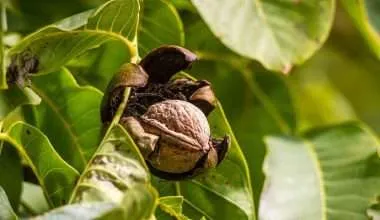What are Genetically Modified Organisms (GMOs)?
Genetically modified organisms (GMOs) are those whose genes have been artificially modified in a lab in order to help the expression of physiological qualities in demand or increased yield of wanted organic food products. In traditional methods of producing domesticated animals, agriculture and breeding of pets, the system has been utilized for quite a while in the custom of choosing breeding individuals with wanted characteristics from a herd and having them cross-breed in order to give out an organism that has the ideal attributes in demand.
The whole procedure of artificial modification of genomes is known as genetic engineering and is routinely used for creating combinations of viruses, bacteria and animal qualities that don’t happen in nature or in ways where the ordinary crossbreeding techniques would not work.
Pros of Genetically Modified (GMO) Foods
GMOs can be used to get better traits in Food.
Food grown can be genetically modified to produce such qualities in food which can benefit mankind. An example would be fruits that take longer time to rot and hence could limit wastage of fruits. There are varieties of apples which take longer to turn brown when they are cut. These qualities can be brought about by making stronger color, taking out seeds or making the plant adapt to severe climatic changes. A great deal of foodstuffs that have been progressed have greater amount of nutrients, for example, protein and calcium. A better example would be how golden rice is genetically modified to have greater beta carotene content, a source of Vitamin A.
There have been a few reports which suggest that when one vitamin or constituent is increased in a food-stuff, it’s at the cost of another vitamin which would decrease.
GMOs can be made to grow in the worst of environments
Genetically Modified foods can likewise be controlled to grow in harsh and selected environments. This should be possible through making crops that are progressively impervious to pests. They may likewise be made to have improved resilience to various chemicals, for example, herbicides or pesticides. Therefore, cultivators can get improved yields.
Boost the yield of farmlands, thus benefitting farmers.
The yield from GMO can be controlled in such a way so as to produce more from the same agricultural land. Even if not quite visible on a small farmland, transitioning completely from traditional crops to GMOs could be the answer to fulfilling the needs of growing populations and for coming generations.
Research demonstrates that by 2050, the total world population would rise to 10 billion. This means that the demand for food available from existing agricultural lands would increase. To be able to sustain that expected rise in population, GMO offers a solution without raising the price of food products.
As good as it may seem, a more recent study by U.S department of Agriculture’s Economic Research Service suggested that over the 15 years that the GMO groups have been put to commercial use, GMO crops have not shown a significant rise in the yield potential.
GMO foods can be made available in the areas which are inaccessible.
Right now, we are producing 17% more food than what is required by the total world population. The issue is the transport of food to the region where there is less food available. By the time the food reaches these areas, most of it is rotten.
As said before, the GMO foods have longer lives hence they can be transported, without rotting, to longer distances where there are communities which really need them.
Fewer chemicals (such as pesticides) are required to sustain GMO crops.
A study which measured the amount of pesticides used on genetically modified cotton for a time period of 20 years showed a 7% decline in the amount of pesticides used in contrast to the crops which were not genetically modified. A report by EPA (Environmental Protection Agency) also suggested that Bt crops have led to a decrease in the use of insecticides by 123 Million pounds.
In a way, this is beneficial for the environment as well because the chemical run off due to these pesticides from the agricultural lands into rivers causes much of water Pollution and death of marine life.
GMO foods match the standards of the other food products – says FDA.
A research on GMO food by Stanford University claimed that when GMO foods were compared to organic foods, there were no added health risks and nor were they any more beneficial in their nutritional value.
GMO crops lead to saving in terms of energy, soil and water.
Since GMO crops can be grown anywhere, this leads to lower burden on the food distribution networks. A lower burden on the food distribution networks would mean that there would be fewer effects on the environment.
With the proper genetic combinations, GMO crops can be made to grow in regions with very limited rainfall without irrigation. In addition to that, these crops are quite resistant to diseases and can survive well, therefore, they can be thought of as a sustainable and reliable supply of food.
It saves crops from extinction
Usually, the organic food products that we consume are of single source from where it originated. Like navel oranges, they were derived from the single tree and that has been attached to grow more trees.
Without genetic varieties, there would be major risk of extinction if a disease or a micro-organism is to be able to alter the gene of the trees. Hawaiian Papaya was saved from extinction because it was genetically engineered and we made
A newer discussion is about the GMO bananas. Most of the bananas in the world are the Cavendish Bananas. These bananas are quite long lasting and hence are usually the ones used in international trade. These bananas have the same issue as the navel orange, derived from a single tree source and it’s been that way ever since. Hence, if a disease or a virus was to infect a plant, almost all the plants in the world would be infected. Our fears came true when there was the discovery of a new strain of Fungus (Fusarium Oxysporum) which was named tropical race 4. Since this strain can spread from plant to plant, it could possibly infect all the plants in the world. Scientists have been working on genetically engineering the Cavendish banana to be resistant to this fungus or making another variety of bananas as long lasting as the Cavendish bananas. Some scientists are also looking into making ‘golden bananas’ with higher Vitamin A contents, just like ‘Golden Rice’.
Lower pesticide concentration in foods
GMO crops with the generic ability to fight off pests would definitively lead to a decrease in pesticide use. A report from USDA showed that 85 percent of the food tested from the markets had pesticide residues.
In 2016, EPA suggested that more than 99% of the food products tested from the markets had pesticide residues on them but they were quite below the dangerous concentrations established by EPA.
Cons of Genetically Modified (GMO) Foods
GMOs could be linked to cancer
In 2013, a published research claimed that GMO crops led to development of cancer in rats. This study was later retracted by the paper that published it on grounds of falsifying information. But it was enough to get the wheel rolling as other journals published the study. This led to a steep decrease in the use of genetically modified corn.
Only 5 companies hold the monopoly in the GMO seed markets
Most of the negativity surrounding GMO is due to the involvement of Monsato. The 5 major along with Monsato include Agrosciences, Bayer, BASF, Dow, DuPont, Sungenta.
This means that these GMO seeds are financially benefitting these companies as well as the farmers. To sustain these revenues, some of the newly developed seeds are copyrighted. This has led to legal issues between the companies that make the new GMO seeds through genetic engineering and farmers that make the same seed via using GMO crops and cross-pollinating them even though the farmers are not involved in genetic engineering.
Herbicide-resistance develops in weeds, regardless of the fact that they are grown with GMO crops.
As of now there are 64 varieties of weeds that are quite resistant to the weed killer atrazine. These varieties have acquired the resistance even though they haven’t grown in proximity to GMO crops to be able to acquire it from them.
In the Southern states of the United States, most farmers lose almost have of their yield due to the growth of atrazine-resistant weeds, even though they plant GMO crops.
Autonomous Research restrictions on newly developed GMO seeds by GMO organizations
Users of GMO seeds are restricted to use the finished product for research purposes because this safeguards the revenue of the company when the farmers are able to get good yield from these GMO crops.
Because these seeds are to be regarded as the property of the company, even if a farmer was to unintentionally grow a GMO crop, he may be liable to pay reimbursement to the company.
GMO crops can have effects on nearby fields
GMO crops may be genetically different but they grow and develop the same as usual crops, which means cross-pollination is still a major factor for the crop to make fruit. Bees being involved in cross-pollination can be exposed to the genetic alterations of the pollen from GMO crops.
When spreading seeds onto the land, a few seeds can spread over the neighbors’ lands as well. And the organic farms around the GMO crops can get contaminated as well. When there is cross-pollination between the farms, we cannot predict what will happen to both the farms. Exception to this are the soya bean crops which do not cross-pollinate.
GMOs can lead to development of Super Bugs
When the pests are attacked with pesticides, most of them die but a few of them survive. The ones that survive have generations which are either immune to the pesticides used or require a higher concentration of pesticides to be killed. If the pests are immune to the pesticide, farmers need to use stronger pesticides (which may be genetically engineered) and hence newer and more resistant pests could develop out of using the stronger and stronger pesticides.
If GMO crops were to contain pesticides within themselves (which they usually do) it could lead to the formation of stronger pests also known as ‘Super Bugs’,
GMOs can have an effect on proteins of animals which feed on them
Most of the plantations in the United States are genetically modified crops. These crops are then also used as feed or livestock. This leads to animals accumulating genetically modified proteins into their systems, contaminating the animal-based food products that we get from the markets.
Traces of GMO components have been found in multiple animal-based products such as milk products, eggs, seafood as well as meat-based products (GMO contaminated animal proteins).
They could cause an increase in Allergic reactions
GMO foods with greater nutritional benefits added to them genetically could potentially cause allergic reactions in humans. Brown University claims that when producing GM seeds, modification and addition of proteins is made. These are proteins which do not occur naturally in the original species of the plant.
It might also be possible that the protein added could pose as an allergen to humans, or could give rise to a new disease.
In the past ten years, there has been a rise from 3% to 5% in the number of allergic reactions in kids after eating food. Although there hasn’t been enough proof to suggest that it was due to the GMO foods.
Even if GMO foods have certain genetic components of allergens, they can cause an allergic reaction as well.
They could lead to a rise in antibiotic resistance
GMOs are constantly being improved by making them more and more antibiotic resistant, leading to the development of tougher crops that will grow no matter what. Although not proven, we think that this could lead to a rise in the antibiotic-resistant bacteria.
This antibiotic resistance can also be acquired by humans, which would lead to existing medicines not being able to treat the disease properly. This would mean that humans would then need to take stronger doses of current medications or newer more potent medications to treat infections which could have bad side effects as well.
When discussing the pros and cons of GMO foods, one should note that there are infinite myths and rumors surrounding them. Although we have established that GMO crops can produce more food for the growing population in this world, some believe that they cause issues in the metabolism of GMO foods. Hence, if a company releases seeds of GMO crops, they should be well-treated before hitting the markets. Farmers should be allowed to grow GMO plants without fearing lawsuits from major organizations, so that they can also benefit from the GMO crops and create more food for people.






